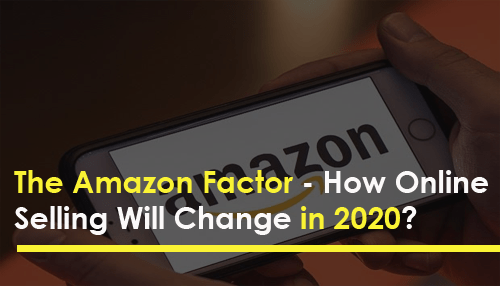The Amazon Factor is for real. However, it doesn’t say that Amazon.com is the only online selling platform for the coming year.
For better or for worse, the world’s economy is in the pain of the “Amazon Factor,” a phrase used to portray the success of Amazon that has upended customer expectations and retail practice, online as well as offline. In 2018, Amazon was already responsible for around 50% of US eCommerce sales and around 5% of all nation’s sales.
Boasting years of profits, and one of the richest men as its figurehead, Amazon definitely experienced its way of doing the right things, rightly at the right time.
What Is the Amazon Factor?
This may vary based on the niche or industry being referred to. Still, it usually refers to the difficulties most, if not all, stores, especially brick-and-mortar stores, face while they need to compete with Amazon. The wide variety to select from, fastest shipping, lower prices, free returns, as well as “Prime” subscriptions all hand around to make higher customer expectations for other retailers trying to compete.
Is Amazon wiping out the whole competition? Research and stats prove that Amazon’s triumph has shown the way to many business closures, however many ventures, indeed, have tackled this competition effectively and creatively to hold their ground and compete for the customers. In a nutshell, the Amazon factor is another reason why the retail business is constantly unstable.
The Amazon factor does not affect eCommerce players solely; however, it is these providers who are on that front and have to remain agile in case their giant competitor swipes away their customers. So here are my forecasts for the eCommerce industry in the year 2020:
The race of “last mile” logistics will become more cutthroat
Amazon’s delivery is a logistic phenomenon that enables the product delivery of nearly all consumer goods to the shopper’s door in a matter of a few days and even a few hours.
Ecommerce players have always been under continuous pressure to beat Amazon’s efficiency and speed. To meet such expectations, I predict more eCommerce ventures to turn to courier applications to beat Amazon’s delivery performance in the year 2020.
The “mobile-first” switching will ultimately happen in 2020
Dropshipping and eCommerce providers should work with mobile users. In 2019 mobile applications already became a preference over desktop applications. Ecommerce platforms with potent shopping mobile applications were making more sales on mobile.
Ecommerce and AI will go even closer in 2020
Amazon never breaks down on its achievements. One of the significant landmarks, Amazon explored in the past has been application and artificial intelligence, machine learning, which notably drives the Alexa smart speakers by Amazon, and its vastly profitable Web Series division gives paid AI cloud computing.
However, artificial intelligence has played a significant role in the direct eCommerce routines of the Amazon business. Many experts suggest various Amazon eCommerce tools like algorithms to detect trends and upselling through custom recommendations, testing of ad copy, niche and keyword research, and the like. Helium 10 Tools is one such Amazon Seller tool that packs around all the necessary utilities related to the Amazon Seller business. You can check out this AI tool by applying 1 x Helium 10 Discount.
Luckily, most, if not all, the other eCommerce players can also unlock such AI tools, to the Data Science list “shoestring” AI choices like chatbots that can give customer support as well as AI-based marketing tactics. So wait for the many more AI developments and deployments in 2020.
The battle for the online grocery shopping industry will go on
One of the essential stories in the eCommerce arena had a lot to go with brick-and-mortar locations, for instance, Amazon’s acquisition of Whole Foods for more than $13 billion. However, according to several eCommerce experts, Amazon’s step into the food and grocery business was a mistake.
Another study proved that households that used online grocery shopping based on local physical stores spent around $200 every month. In contrast, the Amazon grocery buyer spent $74 every month. That is a piece of discouraging news for a giant company like Amazon. But for the remaining eCommerce and grocery niches, the takeaway is crystal clear: This battle for the very cherished online grocery industry will keep going.
All in all, consumers’ spending on online grocery shopping is increasing day by day. A report that appeared in 2018 accomplished that online orders went to more than 5% of sales in the USA. These stats doubled in the year 2019, and therefore, it is the sign that 2020 could be the best year for all other eCommerce players to enter the online grocery game.
Conclusion
To conclude, I would like to mention that Amazon Factor is real. However, I would also like to mention that Amazon isn’t the only player in the arena of eCommerce that will matter in the coming years or years to come. This competition will be severe throughout 2020 as various trends of the present play out, as well as the eCommerce industry, continues to shift.



